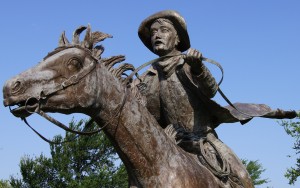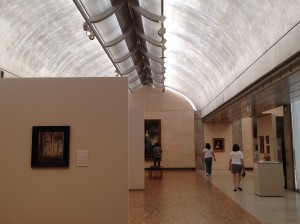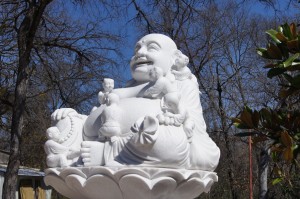‘You can warm your socks in the oven but that don’t make them biscuits’
 This and other tidbits of cowboy wisdom etch the Wild West into steps and flagstones at Frisco’s Central Park. Located just north of Dr. Pepper Arena, many Frisco residents know the park only from the confines of their cars as they whiz past Anita Pauwels’ bronze statues of cattle and cowboys at Parkwood Drive.
This and other tidbits of cowboy wisdom etch the Wild West into steps and flagstones at Frisco’s Central Park. Located just north of Dr. Pepper Arena, many Frisco residents know the park only from the confines of their cars as they whiz past Anita Pauwels’ bronze statues of cattle and cowboys at Parkwood Drive.
A seven acre oasis in the city, Central Park celebrates that time in history when cattle not cars traveled up Preston Road. Climb the steps from the parking lot and read about the Shawnee Trail. Carved into each stone is a bit of cattle trail lore. Learn that over 350,000 Texas cattle headed north each year on the Shawnee, Chisholm and Goodnight-Loving trails. Be inspired by the simple wisdom of cowboys with whimsical sayings like ‘A go-getter is a cowboy who forgot to hobble his horse’ and ‘I reckon the Lord done put tumbleweeds here to show which way the wind is blowing.’ On the hilltop, three large bronze reliefs depict cattle drives, from stampeding herds to chuck wagons.
The oldest north-south route in Texas, military surveyors set up the Shawnee Trail with small forts to protect settlers moving from the Red River to the Brazos in the 1840s. According to Wayne Gard, author of a Southwestern Historical Quarterly article on the Shawnee Trail, it was the chief route used to trail longhorns from Texas up to Kansas from 1850 until 1867. The Shawnee Trail roughly parallels what we know today as Preston Road.
Central Park’s outdoor art gives insight into those rough cattle trailing times. Pauwel’s bronze statues capture both cowboy and longhorn as they must have looked over 150 years ago. Two fountains on top the plateau represent the historic Twin Wells, a source of water on the Shawnee Trail. Frisco can trace its roots to the Shawnee Trail and its cattle drives. At that time, however, there was no Frisco. A settlement called Lebanon — near our modern day Lebanon Road — provided Texas drovers a stopping place on their way north.
In addition to the dose of history, Central Park is a peaceful park with ample walking trails and paths. The twin fountains feed a small stream bubbling down the hill, over a small waterfall and into a man-made lake. Walking paths circle the lake, and egrets hunt along its shore.
Central Park has no children’s playground. It’s not that type of park. It is, however, a park with an exquisite mix of green space, public art and local history –well worth the visit. Frisco’s Central Park is located at 3155 Parkwood Drive.


